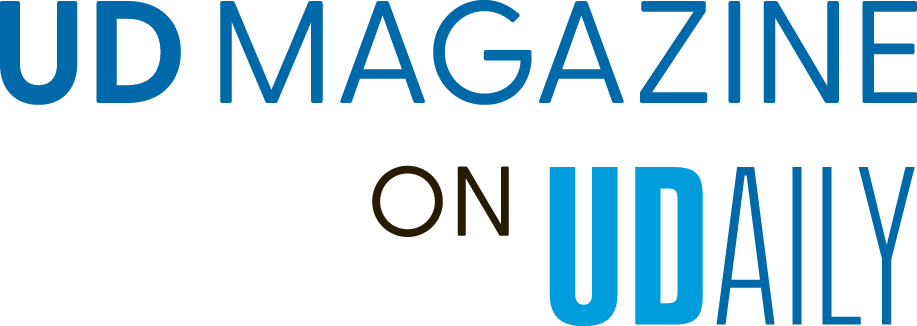


A conversation with Allan Zarembski
February 15, 2024
In an era of autonomous cars and luxury space capsules, railroads are sometimes misunderstood as a transportation system of the past. But this fuel-efficient, tech-powered industry is essential for 21st century life. Making sure it’s safe and sustainable long into the future is Prof. Allan Zarembski, director of UD’s railway engineering and safety program. A world-renowned expert on railway derailment and maintenance planning, he’s a pioneer when it comes to applying big data for the betterment of the industry. All aboard!

Were you a kid who played with trains? Never model trains; only big ones when I grew up.
Was this always the path, or were you… derailed? I was in the aerospace industry, but when I went back to school for my doctorate in engineering at Princeton, the professor who supported me was conducting research funded by the Federal Railway Administration. I ended up doing a railway-related thesis. Then I spent more than 40 years in the industry.
What development has you most excited? Railways are a hub of tech. There are probably 30-40 different types of inspection technologies alone—like multi-million dollar, automated track geometry cars that measure dozens and dozens of parameters on the track.
What are you working on now? Using machine learning to look at hundreds of thousands of railroad crossties, to analyze how they degrade. I just finished another project with a PhD student using Machine Learning on train-mounted camera images to look at the risk of landslides and rockslides.
What’s the most surprising cause of train derailment? These are extremely rare—one every couple million gross ton miles. We have about 200,000 rail defects that are found and removed every year—we catch 99.999% of them. We’re aggressively trying to figure out a way to detect the remaining .001%. People often ask me about the event in East Palestine [Ohio]. That was due to an overheated bearing that managed to overheat in the time it took to go the 25 miles between the track-mounted hot bearing detectors. No one died. Death by train is less likely than death by lightning strike.
People will always need to transport goods, and railroads will continue as the backbone of that system.
Why don’t Americans travel by rail to the extent that Europeans do? The U.S. operates close to 25 percent of the world’s railroad traffic, and U.S. freight is widely considered the best in the world. But when most people think of railroads, they think of passenger service. For shorter distances, America’s system is alive and well. But because we’re so spread out, we’ve historically had issues with a long-distance operation. Most people—including me—would rather take a plane for six hours to get from Philadelphia to Los Angeles, than a train for three days.
But… airline delays! Shrinking leg room! Will demand for high speed rail reach a tipping point? We’re already seeing movement in that direction. California is building their high speed rail system, and the private company Brightline just opened up high speed rail from Miami to Orlando, with plans for another between Los Angeles and Las Vegas. Short answer: If California is successful in its implementation, we’ll see other corridors opening up.
You’ve traveled by train on six continents. Greatest adventure? I was once called out to deal with a problem in Alaska, where snowbanks on either side of the railroad can be 10 feet high. I came upon a log on the track that turned out to be a moose leg.
What does the U.S. railway industry look like in 50 years? People will always need to transport goods, and railroads will continue as the backbone of that system. In 50 years, you’ll be looking at a sophisticated, sustainable, energy-efficient industry that’s on the edge of technology.
Favorite fictional locomotive? Orient Express? Polar Express? Thomas? The Little Engine that Could—I love reading it to my grandkids
Contact Us
Have a UDaily story idea?
Contact us at ocm@udel.edu
Members of the press
Contact us at 302-831-NEWS or visit the Media Relations website


